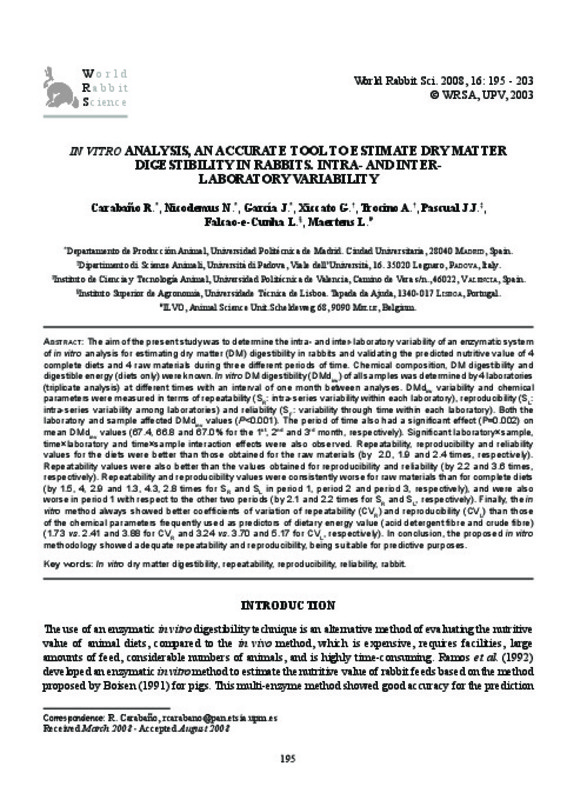JavaScript is disabled for your browser. Some features of this site may not work without it.
Buscar en RiuNet
Listar
Mi cuenta
Estadísticas
Ayuda RiuNet
Admin. UPV
In vitro analysis, an accurate tool to estimate dry matter digestibility in rabbits. Intra- and inter- laboratory variability
Mostrar el registro completo del ítem
Carabaño, R.; Nicodemus, N.; García, J.; Xiccato, G.; Trocino, A.; Pascual Amorós, JJ.; Falcão-E-Cunha, L.... (2008). In vitro analysis, an accurate tool to estimate dry matter digestibility in rabbits. Intra- and inter- laboratory variability. World Rabbit Science. 16(4). https://doi.org/10.4995/wrs.2008.614
Por favor, use este identificador para citar o enlazar este ítem: http://hdl.handle.net/10251/9508
Ficheros en el ítem
Metadatos del ítem
| Título: | In vitro analysis, an accurate tool to estimate dry matter digestibility in rabbits. Intra- and inter- laboratory variability | |
| Autor: | Carabaño, R. Nicodemus, N. García, J. Xiccato, G. Trocino, A. Falcão-e-Cunha, L. Maertens, L. | |
| Entidad UPV: |
|
|
| Fecha difusión: |
|
|
| Resumen: |
[EN] The aim of the present study was to determine the intra- and inter-laboratory variability of an enzymatic system of in vitro analysis for estimating dry matter (DM) digestibility in rabbits and validating the predicted ...[+]
|
|
| Palabras clave: |
|
|
| Derechos de uso: | Reserva de todos los derechos | |
| Fuente: |
|
|
| DOI: |
|
|
| Editorial: |
|
|
| Versión del editor: | https://doi.org/10.4995/wrs.2008.614 | |
| Código del Proyecto: |
|
|
| Agradecimientos: |
|
|
| Tipo: |
|









